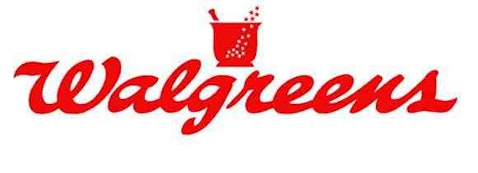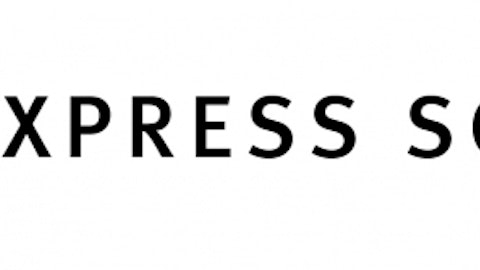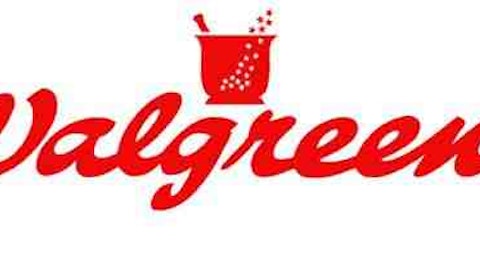Walgreen Company (NYSE:WAG) was named the to Fast Company’s list of Most Innovative Health Companies last year for the second time in only three years. Furthermore, their 2012 Annual Report was filled with new ventures. It bought drugstore.com. It launched a pilot program, transforming many of its stores into what it calls “Well Experience stores,” where the pharmacists are located in front of the stores. It bring in ideas from urban retail design, and perhaps most radically, they have small “clinics” next to the store where an in-house nurse practitioner provide non-emergency health treatment including vaccinations and health testing.
The company has also opened up four 20,000 square-foot stores in a few major cities that cause people to say, and I quote, “Wow — this is Walgreen Company (NYSE:WAG)’s?” (2012 Annual Report). This raises the question, though, is that really what people should be saying? Perhaps. More upscale-oriented retail outlets such as Whole Foods Market, Inc. (NASDAQ:WFM) or Krogers have done better than their more budget-minded brethren, but I still question if customers should be wondering if the store they are in is really a pharmacy.
The problem with Walgreen Company (NYSE:WAG) is that these improvements are not improving its bottom-line. Stock prices have risen recently because Walgreen exceeded earning expectations in the second quarter. However, when we look at the actual figures, reality is not so pretty. Its earnings-per-share and cash flow were both up in comparison to last year, but its sales were essentially flat over the quarter and decreased over the half. Furthermore, customer traffic decreased by 5.2% and front-end comparable store sales decreased by 2.6% (Walgreen). Many of the changes, such as the addition of nurse practitioners, would be expected to bring more people into the stores, not less. In other words, the changes in the stores are likely being less successful than the company had hoped. This happened in a quarter that beat expectations, and there is no reason to think it’ll keep that up, at least not to the same extent.
Walgreen’s competitors
| Walgreen | Rite Aid | GNC | CVS | |
|---|---|---|---|---|
| Market Cap | 45.38B | 2.60B | 4.34B | 70.11B |
| P/E | 21.27 | 23.83 | 18.04 | 17.8 |
Walgreen Company (NYSE:WAG)’s competitors, though, are actually doing quite well and are cheaper as well, at least given their potential.
Rite Aid Corporation (NYSE:RAD) has struggled quite a bit over the last few years. Its most recent Annual Report was mixed, with both same-store and overall sales decreasing, but the profit margin increased (from 26.0% to 28.8%). Furthermore, its market capitalization is only $2.60 billion even though it is the third-largest pharmacy chain by sales and number of stores. If it can continue its move towards more profitability, it will likely achieve a far higher valuation.
A partnership that bodes well for the company is the one it has with GNC Holdings Inc (NYSE:GNC). GNC Holdings Inc (NYSE:GNC)’s vitamin business is a growth industry that will funnel business into Rite Aid Corporation (NYSE:RAD) stores. It also has a healthy valuation for a company in a growth sector with a price-to-earnings ratio of only 18.04, which is slightly higher than the market average, but not by much. The valuation is lower than that of either Walgreen Company (NYSE:WAG)’s or Rite Aid’s, both of whom have dimmer growth prospects. GNC had 30 quarters of same-store sales growth, a cumulative increase of 84% (GNC Holdings). If we compare GNC Holdings Inc (NYSE:GNC) with Walgreen, GNC has better growth prospects and is cheaper. The only real downside here is that GNC is in a younger, and hence riskier, industry. As a result, GNC could very possibly fall further than Walgreen, but it will likely rise faster.
CVS Caremark Corporation (NYSE:CVS) is also doing quite well. Its net revenues increased by 15% and its earnings per share increased by 22% between 2011 and 2012 (CVS). Its first quarter results were even better, with operating profits increasing 21% and earnings per share increasing 28%. (CVS) CVS is in a sense the most logical alternative to Walgreen because they are both profitable, growing pharmacies with established positions in the industry. CVS Caremark Corporation (NYSE:CVS) has a lower price-to-earnings ratio and has seen grown faster recently, however. It may not be as “innovative” or “cool” as Walgreen Company (NYSE:WAG), but innovation that’s harming a company is far worse than the expansion of a well-established, successful way of doing business.
Conclusion
To sum things up, one should think twice before investing in Walgreen Company (NYSE:WAG). Its main competitors are growing and doing better than they did last year. Walgreen, however, is not doing as well. It is trying to reinvent itself, but so far the changes have not produced stellar results. CVS Caremark Corporation (NYSE:CVS), Rite Aid Corporation (NYSE:RAD), and GNC Holdings, on the other hand, are doing better now than they were a year ago. They appear poised to take advantage of the strong growth in demand resulting from the aging of the baby boomer generation.
The article Is Walgreen Innovating Itself into Oblivion? originally appeared on Fool.com and is written by Paul Sangrey.
Paul Sangrey has no position in any stocks mentioned. The Motley Fool has no position in any of the stocks mentioned. Paul is a member of The Motley Fool Blog Network — entries represent the personal opinion of the blogger and are not formally edited.
Copyright © 1995 – 2013 The Motley Fool, LLC. All rights reserved. The Motley Fool has a disclosure policy.





